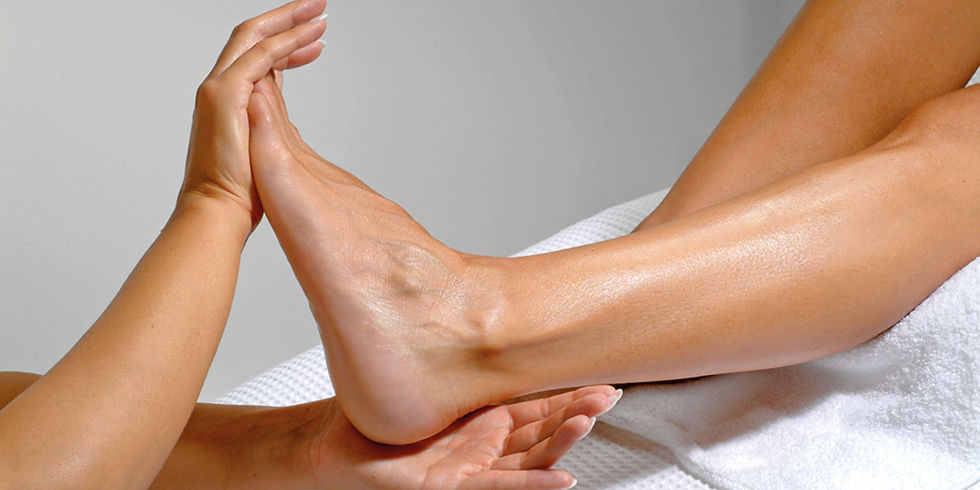How Does Acupuncture Work?
- Dr. Stephanie Bartolotti
- Sep 20, 2015
- 3 min read
Updated: Aug 6, 2022

There are a lot of misconceptions when it comes to Acupuncture and Chinese medicine. Chinese medicine has a history thousands of years old tracing back to the courts of China. This medicine was developed specifically to treat the emperors of the court to keep them youthful, vibrant and fertile. Thus Chinese medicine was know as the “emperor’s medicine” and was used both to treat any and all health conditions as well as to enhance longevity, promote fertility and prevent illness. The emperors wanted to live a long time and reproduce abundantly, and Chinese medicine worked beautifully for this.

When Chinese medicine was brought over into the United States, however, the ancient texts for this medicine were translated by those not trained in understanding ancient Chinese. This lead to many mistranslations and misconceptions, the most common one being the idea of “Qi.” In 1938, French scholar George Soulié de Morant mistranslated “Qi” as meaning energy. This mistranslation lead many people to believe that Acupuncture and Chinese medicine was an energy based medicine without any tangible substance. The true meaning of “Qi” is “oxygen” or “the function” of something. For example, when your acupuncture physician says you have “Qi deficiency” it means that there is a decrease in oxygen in the body; if they say your Lung Qi is deficient, it means that the function of your Lungs is weak.
Based on the “energy medicine” model, many people today still joke that Acupuncture is “voodoo” or “hippie” when in fact it is a solid physical form of medicine. The term “Mai” often mistranslated as a “meridian” or “energy channel” – the area of the body needled in Acupuncture – actually means “blood vessels.” With acupuncture, what we are actually doing is working with networks of blood vessels in the body to encourage blood flow to various structures of the body including muscle groups (to relieve pain) and organs (to treat internal conditions). The network of blood vessels we are working with are named by the organs they supply blood to (i.e. Liver, Stomach, Kidney, Lung, etc.) For example, if you have a Liver problem, we would needle points on the Liver vessel and points that influence blood flow through the Liver in order to improve its function. Each vessel system is also involved in supplying blood flow to specific muscle groups. For example, needling points on the Kidney vessel will encourage blood flow and relaxation of the deep muscles of the back, spine, neck and back of the legs. The blood vessels dilate (vasodilation) and this increased blood flow and relaxation of the musculature then treats chronic pain in the back, neck and legs (in this case). For the treatment of organ system problems and internal conditions, needles are left in 8-12 minutes to stimulate the sympathetic nervous system, while in pain conditions and anxiety, needles are left in 30-45 minutes to promote parasympathetic relaxation.

Improvement of blood flow from an acupuncture treatment.
So how does sticking a needle into the body improve health and treat disease? Acupuncture is based on treating the #1 cause of disease – Blood Stasis. Blood stasis means impaired blood flow in the body, which can lead to pain and/or organ dysfunction. The process of aging is caused by blood stasis, and the measure of health is determined by the functioning of the vascular (blood vessel) system. Simply put, if there is insufficient blood flow in the body, there is pain or disease; and the body will not heal without proper blood flow. Sticking a needle in the body (don’t worry, these are tiny needles) opens up the blood vessels and causes an increase in blood flow. Depending on the area targeted, this will influence blood flow to specific organs and muscle groups to treat the cause of pain or dysfunction – Blood stasis. Acupuncture also involves the nervous system by activating nocicepter fibers, sensory nerves and proprioceptor fibers that travel from the skin to spine and into brain. This action causes the body to release enkephalins (the body’s natural pain killers) and shuts off the brain’s pain signal to a particular area.

Acupuncture points and their effect on the brain.
In short, Acupuncture is a physical medicine that improves the flow of oxygen in the body, enhances blood flow and improves the health of the organs and nervous system. If there is an obstruction in the blood flow to a particular area of the body, that area of the body will be negatively affected, resulting in disease or malfunction. There is only one way to heal, and that is through blood flow. The blood contains all of the essential healing ingredients that the body can possibly produce – analgesics, anti-inflammatories, hormones, and oxygen is all contained in the blood. Acupuncture makes this healing process possible and also fixes dysfunction in the body to prevent the progression of disease.









Thankk you for sharing this